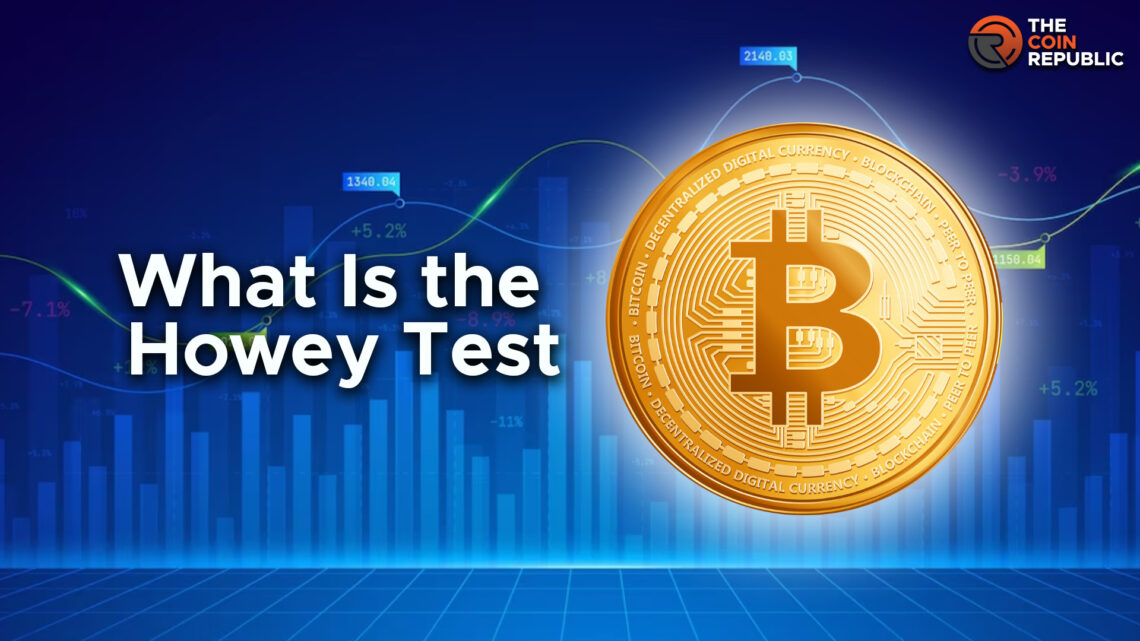- 1 The Howey test determines whether a digital asset qualifies as an investment contract.
- 2 Digital assets that satisfy the prongs of the Howey test are classified as securities as per the U.S. federal laws.
- 3 Crypto exchanges offering securities are subject to the regulatory actions of the financial regulators.
Although the rise of cryptocurrency projects has brought technological innovations in the global financial landscape, it has also created legal conundrums for the financial regulators. An issue to be addressed before engaging in the offer, sale, or distribution of a digital asset is whether it qualifies as ‘security’ by the U.S. securities laws.
Howey test is a set of standards a digital asset needs to meet in order to be considered as a security by the SEC and to be regulated as such. Since its inception in 1946 after the famous SEC vs. W.J. Howey Co. case, the Howey test has been applied in many cases to check whether the financial arrangements and offerings constitute as securities.
Understanding the Howey Test
The Howey Test is a legal framework set by the U.S. Supreme Court for determining whether a transaction qualifies as an “investment contract.” If the digital asset exhibits the characteristics of an investment contract, they are considered as ‘securities’ under the federal securities law. It is worth mentioning if the investment is a security, it is considered as a financial instrument with a monetary value that can be easily traded or sold in the financial market.
Under the Securities Act of 1933 and the Securities Exchange Act of 1934, the firms offering securities are obliged to register with the U.S. Securities and Exchange Commission (SEC). This registration requires the company to disclose certain information to investors about their firm and securities they are offering. As per the federal securities laws, this step is deemed crucial for establishing transparency and helping investors in making informed investment decisions.
An investment contract exists when there is investment of capital in a common enterprise with the expectation of profits solely through the efforts of others. If a transaction fulfills all these requirements, then as per the Howey test, it is determined as a security to which federal securities laws can be applied. This test can be applied to any contract, scheme or transaction.
The Howey test consists of four key criterias on the basis of which a transaction can be qualified as a security or investment contract. Each element of the Howey test is mentioned below:
- Investment of Money
As per the first prong of the test, an investment of funds includes a provision of capital, goods, cash, and assets. In the case of crypto space, buyers purchase coins or tokens in exchange of crypto or fiat currencies. This could be construed as an investment and therefore, satisfies the first condition of the Howey Test.
- A Common Enterprise
Although not explicitly defined by the Supreme Courts, this second criterion of the Howey test holds a significant importance. In simple terms, the digital assets can be determined as security if the financial success of the investors converges on a common enterprise.
This prong can be proved by providing evidence of the investors pooling their resources in the same enterprise, linking their success to the enterprise that receives investment, and relying on the expertise of a third party. Since the core of blockchain technology is based on decentralization, most cryptos hardly satisfy this prong.
- Expectations of Profits
This prong of the Howey test is an objective criterion, meaning it is based on the investor’s intent for purchasing an asset. If the transaction is done solely to gain profit, then the asset could be a ‘security.
However, if the intent is to store wealth then its classification would be something other than an investment. Hence, the fulfillment of this condition is based on the transaction itself and in what manner the asset was offered or sold.
- Work Effort of Others
If the investor relies on some other party to generate a return on their investment, then this prong of the test is satisfied. However, in cases where investors have contributed to the success of the transaction, it is most likely not an investment.
Howey Test and Cryptocurrency Market
Since the world of crypto is made up of a wide range of tokens and assets, their determination as securities as per the Howey test should be done carefully. It should be noted that decentralized cryptos which are primarily used as an exchange medium and have not raised funds through Initial Coin Offerings (ICOs) might not be securities, as per the Howey test.
The tokens that generally do not pass the Howey test are classified as ‘utility tokens.’ These tokens provide the investors with access to a future product or service. In contrast, some deem these tokens as securities and find them satisfying all the criteria for the Howey test.
As mentioned above, this test determines if the cryptocurrency offering should be categorized as the security and subject them to federal securities laws if they are. This has significant implications for the crypto industry as the crypto exchanges that break these laws face harsh penalties, legal actions, and reputational harm to their business.
Therefore, crypto companies should carefully consider the criteria of the Howey test and then structure their offerings to show their compliance with the U.S. Federal securities laws.

Nancy J. Allen is a crypto enthusiast, with a major in macroeconomics and minor in business statistics. She believes that cryptocurrencies inspire people to be their own banks, and step aside from traditional monetary exchange systems. She is also intrigued by blockchain technology and its functioning. She frequently researches, and posts content on the top altcoins, their theoretical working principles and technical price predictions.


 Home
Home News
News






